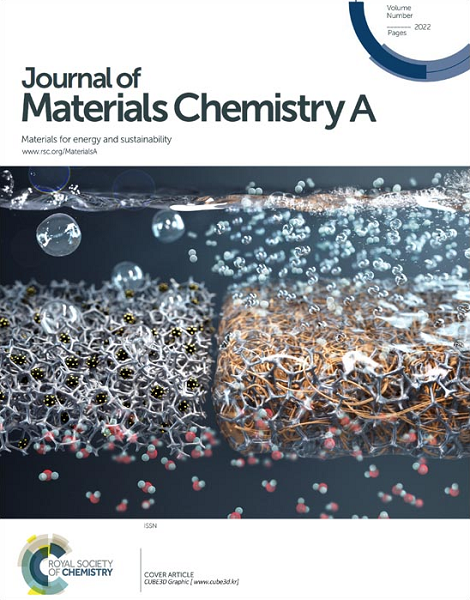Antioxidative, low-concentration MXene inks with high-viscosity for infrared encryption and thermal energy harvesting
IF 10.7
2区 材料科学
Q1 CHEMISTRY, PHYSICAL
引用次数: 0
Abstract
MXene-based inks exhibit great potential in direct writing, extrusion printing, and multifunctional coatings. However, achieving high-viscosity processing of low-concentration MXene inks remains a significant challenge due to the poor rheological properties of MXene. Here, we report high-viscosity processing MXene inks with extremely low concentration using a gel-assisted strategy through the formation of a three-dimensional network between MXene, water, and glycyrrhizic acid (GA). This network not only enhances oxidation resistance but also imparts remarkably high viscosity of 31283 Pa·s, long-term stability, and thixotropic behavior to MXene inks at a concentration as low as 0.5 mg/ml. The unique rheological performance of MXene/GA inks enables multi-mode processing within wide viscosity ranges. Furthermore, the addition of gradient GA mass enables the composite ink to exhibit a wide infrared emissivity regulation capacity (∆73%, from 19% to 92%), showing great potential in infrared color imaging and information encryption. Meanwhile, the composite inks incorporating with 1 wt% GA have a remarkable solar spectral absorptivity of 90.1%, demonstrating their feasibility for solar thermal energy harvesting and conversion. This work provides a feasible strategy to realize multi-mode high-viscosity processing of low-concentration MXene inks, paving the way for multifunctional applications of MXene inks in various scenarios.求助全文
约1分钟内获得全文
求助全文
来源期刊

Journal of Materials Chemistry A
CHEMISTRY, PHYSICAL-ENERGY & FUELS
CiteScore
19.50
自引率
5.00%
发文量
1892
审稿时长
1.5 months
期刊介绍:
The Journal of Materials Chemistry A, B & C covers a wide range of high-quality studies in the field of materials chemistry, with each section focusing on specific applications of the materials studied. Journal of Materials Chemistry A emphasizes applications in energy and sustainability, including topics such as artificial photosynthesis, batteries, and fuel cells. Journal of Materials Chemistry B focuses on applications in biology and medicine, while Journal of Materials Chemistry C covers applications in optical, magnetic, and electronic devices. Example topic areas within the scope of Journal of Materials Chemistry A include catalysis, green/sustainable materials, sensors, and water treatment, among others.
 求助内容:
求助内容: 应助结果提醒方式:
应助结果提醒方式:


